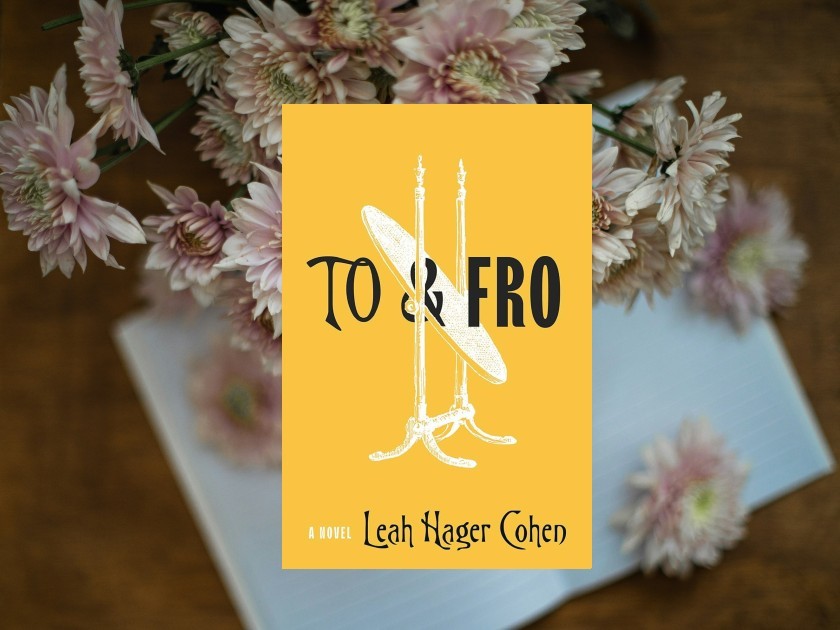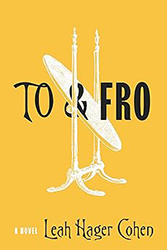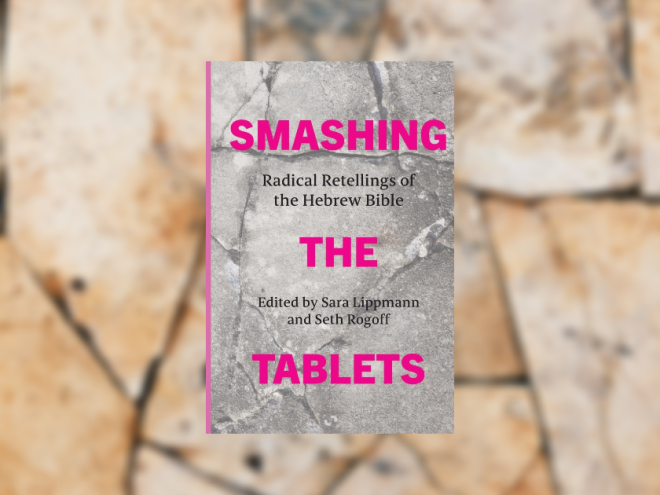
Having been raised in a secular home with a racially and religiously mixed family, I was as surprised as anyone when, in my mid-forties and for reasons I still can’t explain, I joined a shul. I’d barely set foot in a synagogue before this, and everything sparked my curiosity. But the part that spoke to me the most was Torah study, which I attended every Shabbat morning.
I was as interested in the people as I was in the texts we discussed. A dozen or so regulars returned week after week. There was the professor who performed rap songs to teach his college students about stem cells. The forensic psychologist who evaluated people standing trial for violent crimes. The scientist who brought his own chumash from home, bulging with bookmarks he’d fashioned from bits of plastic bags. The theater director. The bankruptcy lawyer. The former cult member. The handyman. The convert. The atheist. The therapists – always lots of therapists around the table at Torah study.
Every Shabbat we’d gather around the table, our chumashim open to that week’s parashah. We’d peer into the endlessly layered text as if into a cave upon whose walls the rabbi would focus an assortment of lights–this sage said this, that sage said that; if we look at the Hebrew root; if you translate it a different way; according to one midrash; according to another rabbinic tradition. But responsibility for interpreting the text was not limited to the rabbi. That’s what made Torah study so lively, so alive: we all chimed in, raising questions, objections, and free-associating based on our own varied fields of experience. We argued, we cracked jokes. Sometimes we said, Ah! Often we laughed. Occasionally we shook our heads in dismay. We don’t cherry-pick, the rabbi would remind us. We don’t skip over those parts of the text we find troubling; we wrestle with them.
This is how you study Torah, I learned: in community. In community with other people and in community with other stories. The Torah is not simply a book — it’s a multiplicity of voices that comprise the oral tradition (Torah Sheba’al Peh) as well as the written (Torah Shebichtav). Nor is Torah study bound by time. If the oldest part of the Torah is a stone thrown in water, and the ancient commentaries are ripples radiating from the splash, then the conversations we have today, sitting at study tables all across the earth, add more more ripples, and the voices of tomorrow will expand them further.
After several years of regular attendance, I felt an urge to go deeper in the way that I know how: by writing. I proposed to write a nonfiction book about Torah study that would highlight the stories of some of the individuals who chose to center the weekly practice in their lives. I was curious about the variety of reasons we felt called to this practice, the various understandings of what it was we sought. With the rabbi’s permission, I embarked. But after a few months of conducting interviews, I learned that not everyone in the group was comfortable with the idea. Enthusiastic as I’d been, the decision to abandon the project was not difficult: if I had to choose, participating in the community meant more to me than documenting it. And yet the desire to deepen my exploration beckoned to me, still.
This is how you study Torah, I learned: in community. In community with other people and in community with other stories.
One day I picked up pencil and paper and began, really in an idle way, to sketch a story inspired by a Kafka parable that had haunted me – playfully, soulfully – for years. Titled “My Destination,” it tells in just a few lines the story of someone who hears a bugle no one else can hear. This prompts him to set off for a destination he cannot name, except to say that it’s “away from here.” He brings no provisions with him, even though he knows his journey will be “immense.” Why is he going, what does he seek? Even this is unclear.
I found myself – again, almost without thinking – writing from the perspective of a young girl who impulsively sets off after him. What issued forth was unlike anything I’d ever written. I kept going, half-bemused, half-amused; it seemed to me there was a kind of cosmic joke here. If the destination of the man in Kafka’s parable is vague, the destination of my girl was even vaguer. And my own destination, it soon became evident, was still more opaque. I had no idea where I was heading, or why, but I felt compelled to write. At some point I stumbled, badly; I lost faith in what I was doing and came to a standstill, writing nothing for months. When next I picked up my pencil, I found myself beginning a different tale, with a different girl, inhabiting a different world. This girl was a searcher, too, even if her journey was less literal. Only gradually did it dawn on me that the two tales were in dialogue with each other. Both girls shared a similar restlessness, a needling desire for something ineffable, some illumination or connection that lay just beyond her grasp. I began weaving back and forth between the stories, working on one and then the other, discovering echoes between them.
Never as a writer had I placed myself so wholly at the mercy of mystery. Sometimes I felt like a spelunker, training my flashlight’s thin beam on markings I could barely make out. Sometimes I felt like a stone-skipper, observing the ripples my words made as they spread across a pond. Until, with a kind of wondrous thrill, I realized I was writing my Torah study book after all!
For what is Torah study if not a journey we undertake without expectation of arriving at a destination? What is it if not a search that, despite yielding many discoveries along the way, will never offer anything so final as a resolution? Torah study, it seems to me, might best be described as a way of remaining ever in motion, alive to the reality of impermanence within the structure of an ancient ritual.
How fitting, then, that my two stories, my two girls inhabiting different worlds, should remain also in motion, their questions unsolved, their desires unrequited – but not frustrated, not flouted. Instead, as the space separating them grows slighter and slighter, it’s as if they begin to catch wind of each other, until they are buoyed, the two of them, in a shared moment out of time, each alive, finally, to the joy of the journey itself.

To & Fro by Leah Hager Cohen, out on May 21st



